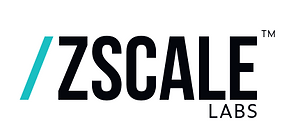
Holographic Representation in Hyperdimensional Computing (HDC)
Sep 30
3 min read
1
6
0

Unlocking the Power of the Brain: Holographic Representation in Hyperdimensional Computing
Hyperdimensional Computing (HDC) is an innovative approach to artificial intelligence that draws inspiration from the human brain's ability to process vast amounts of information efficiently. At the heart of HDC lies a fascinating concept known as holographic representation, which allows for the encoding and manipulation of complex data in high-dimensional spaces. This article explores the principles of holographic representation in HDC and its potential to revolutionize AI systems.
The Essence of Holographic Representation
Holographic representation in HDC involves encoding information into high-dimensional vectors called hypervectors. These hypervectors typically consist of thousands of dimensions, mirroring the brain's neural activity patterns. Unlike traditional computing methods that store data in specific locations, holographic representation distributes information across the entire vector, creating a holistic and robust encoding scheme.
Key Properties of Holographic Representation
Distributed Encoding: Information is spread across all dimensions of the hypervector, making it resilient to errors and noise.
High Dimensionality: The use of thousands of dimensions allows for rich and nuanced representations of complex concepts and relationships.
Similarity-based Operations: HDC leverages the geometric properties of high-dimensional spaces to perform computations based on the similarity between vectors.
Compositionality: Multiple concepts can be combined into a single hypervector through simple arithmetic operations, enabling the representation of complex structures.
Encoding Information Holographically
The process of creating holographic representations begins with assigning unique hypervectors to atomic concepts, such as letters, objects, or sensor readings. These base hypervectors serve as the building blocks for more complex representations. HDC systems use various encoding techniques to map different types of information into the hyperdimensional space:
Random Indexing: Assigning random hypervectors to basic elements, ensuring they are nearly orthogonal to each other.
Continuous Value Encoding: Representing numerical values by interpolating between hypervectors assigned to extreme values.
N-gram Encoding: Capturing sequences of elements by combining their respective hypervectors using binding operations.
Operations in Holographic Space
HDC leverages a set of operations designed to manipulate and reason with hypervectors:
Binding: Combines two hypervectors to create a new one, often used to associate concepts or create ordered relationships.
Superposition: Adds multiple hypervectors together, allowing for the representation of sets or the accumulation of information.
Permutation: Rearranges the components of a hypervector, useful for encoding positional information.
Similarity Comparison: Measures how closely related two hypervectors are, enabling classification and association tasks.
These operations form the basis of HDC's computational capabilities, allowing for tasks such as pattern recognition, associative memory, and even symbolic reasoning.
Advantages of Holographic Representation
The use of holographic representation in HDC offers several compelling advantages:
Robustness: The distributed nature of the encoding makes it highly resilient to errors and noise, maintaining functionality even when parts of the vector are corrupted.
Efficiency: Many HDC operations can be performed in parallel, potentially leading to significant speed improvements in certain tasks.
Scalability: The high-dimensional space allows for the representation of vast amounts of information without a proportional increase in computational resources.
Transparency: Unlike black-box neural networks, HDC operations can be traced and interpreted, providing insights into the system's decision-making process.
Flexibility: Holographic representations can encode a wide range of data types and concepts, from simple atomic symbols to complex structured information.
Applications and Future Prospects
Researchers are exploring the potential of holographic representation in HDC across various domains:
Image and Speech Recognition: HDC algorithms have shown promise in classifying images and speech patterns with high accuracy and robustness.
Natural Language Processing: The ability to represent and manipulate symbolic information makes HDC well-suited for language-related tasks.
Sensor Fusion: HDC's efficiency in handling multimodal data could lead to advancements in areas like robotics and autonomous systems.
Brain-inspired Computing: The distributed nature of holographic representations aligns with theories of how the brain processes information, potentially leading to more biologically plausible AI systems.
As research in HDC and holographic representation continues to advance, we can expect to see more applications leveraging this powerful paradigm. The unique properties of holographic encoding, such as its error tolerance, scalability, and interpretability, make it a promising candidate for next-generation AI systems, especially in scenarios where robustness and transparency are crucial.
Holographic representation in Hyperdimensional Computing represents a fascinating alternative to traditional neural network approaches. As the field matures, it has the potential to reshape our understanding of artificial intelligence and open up new possibilities for creating more capable, efficient, and interpretable AI systems that truly mimic the power of the human brain.
Citations:
https://www.frontiersin.org/journals/artificial-intelligence/articles/10.3389/frai.2024.1371988/full
https://www.researchgate.net/publication/5589577_Holographic_Reduced_Representations
https://www.sciencedirect.com/science/article/abs/pii/S0143816624001684
#HyperdimensionalComputing #HDC #HolographicRepresentation #ArtificialIntelligence #BrainInspiredComputing #DistributedEncoding #Hypervectors #RobustAI #SymbolicAI #CognitiveComputing #AssociativeMemory #ErrorTolerance #ScalableAI #TransparentAI #NeuralComputation #MachineLearning #HighDimensionalSpace #PatternRecognition #NaturalLanguageProcessing #FutureOfAI






